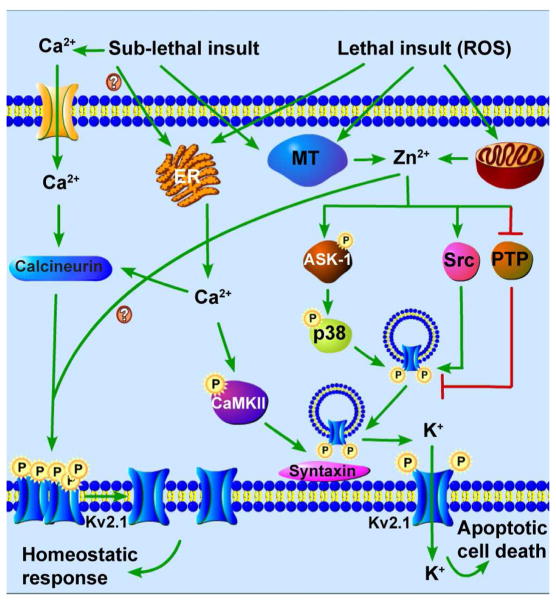Fig. 2.
a) Oxidant exposure in neurons liberates Zn2+ from intracellular metal binding proteins (as detected by an increase in fluorescence using a Zn2+-sensitive indicator such as FluoZin-3), which produces a pro-apoptotic enhancement of Kv2.1 K+ currents. Reprinted with permission and adapted from [124] b) In contrast, neuronal activity or sub-lethal ischemia stimulates Kv2.1 channel dephosphorylation-dependent declustering, which, along with hyperpolarizing voltage-gated activation, induces neuronal tolerance to ischemic or epileptic challenge. Shown are confocal micrographs of rat cortical neurons transfected with plasmid vectors encoding GFP-labeled Kv2.1 channels. Below are fluorescence surface intensity maps, used to quantify the number of clusters present in neurons [163]

